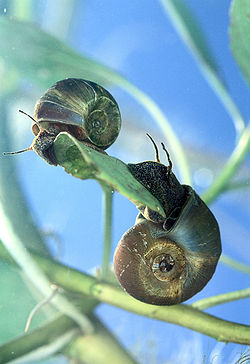| Planorbella trivolvis | |
|---|---|
 | |
| Two specimen of Planorbella trivolvis in their natural environment, on aquatic vegetation | |
| Scientific classification | |
| Kingdom: | Animalia |
| Phylum: | Mollusca |
| Class: | Gastropoda |
| Superorder: | Hygrophila |
| Family: | Planorbidae |
| Genus: | Planorbella |
| Species: | P. trivolvis |
| Binomial name | |
| Planorbella trivolvis (Say, 1817) | |
| Synonyms | |
| |
Planorbella trivolvis is a species of freshwater air-breathing snail, an aquatic pulmonate gastropod mollusk in the family Planorbidae, the ram's horn snails, or planorbids, which all have sinistral or left-coiling shells.